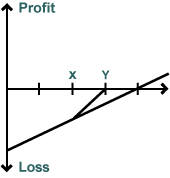“You can only grow if you’re willing to feel awkward and uncomfortable when you try something new.” ~Brian Tracy
I like my comfort zone and I hate it. It’s safe, but if I stay there too long it starts to feel like a cage. No wild creature is happy in a cage, and we’re all wild creatures at heart.
Sure, we like the reliability of being well fed, clothed, safe, and loved. It’s my theory though (formed just this second) that we are meant to hunt, to seek, to struggle, to engage with a world that offers no guarantees.
Like a caged animal, we become depressed when we play it too safe. “Safe” offers no challenge, no growth, and no newness. Without those things we wither and die inside; we watch too much TV, we eat junk food, we numb out.
Could it be that the prevalence of depression in First World countries is because our lives don’t challenge us as much as we need them to?
We all need exercise to be healthy. Muscles need to break to become strong. Do our hearts and minds also need challenge to thrive?
About eighteen months ago I got sick. It was a weird benign tumor that caused a lot of pain, enough pain that I took myself to hospital at three one morning.
Eventually, the tumor healed and the pain stopped. It didn’t go away; it just stopped hurting me. In the meantime, though, I became very careful, controlled, and I dropped out of my life. I felt afraid and limited. I lost faith in myself.
My world got very small and I became too dependent on those close to me. I was not much fun. I lost friendships.
Now I am rebuilding. It’s not always easy, but I’m on the way back.
I can now see that my comfort zone isn’t comfortable. My fears and limitations have drawn the boundaries of my life, and that’s a small cage to live in.
That’s not how I want to live. I remember more lively times and I want that power and flow back. I want to break through the darkness into the bright light, where life is colorful again.
I want my life back.
If you also need to expand your comfort zone, you may benefit from applying these lessons that are helping me:
1. Get honest.
Ask questions. Get really clear on what is true for you. What do you think? What do you feel? What do you want? What is useful? What’s the truth?
Truth can be hard to take, but it puts you on solid ground. You can walk forward on solid ground.
For me, right now I am “calling myself out” on the lie that I lack the power to make changes.
2. Change is possible.
We can make changes. You may have had a vibrant life before and you can make one again. Know you can change and try new things.
When I decide I’m a victim, it’s a lie. It is just not true. Granted, while I was sick change may have been too hard, but that’s not true anymore.
3. Change is uncomfortable, and that’s okay.
It doesn’t come without risk. We can’t stay in our comfort zones and expand at the same time. Growing is going to be uncomfortable. It’s even going to feel wrong. Do it anyway.
The only way to get a bigger comfort zone is to do things outside it until they don’t scare you anymore. Then repeat.
4. Change happens step by step.
Changes seem big when you start out, but they’re just a series of small steps. They’re just a tiny set of actions. They’re the sum of the things you do, day by day.
A slight change in trajectory is a huge change over time. It doesn’t happen all at once.
5. Explore possibility.
Every day, write a list of things that may take you in the direction you want to go. Write a list of ways to expand your life. Write a list of solutions. Write a list of “could do’s”.
You don’t even need to keep the lists. The good ones will stick. They’ll pop up again and again like your favourite muppet.
6. Take one tiny risk a day.
Set yourself one tiny risk. Commit to doing it. That means you have to do it. No second-guessing. You said you would do it; you’re doing it! It may not be the “right” action, but that’s irrelevant. It’s the thing you chose to try.
7. Every action is an experiment.
Not every little risk will pay off, but that’s life, that’s learning. Every action will teach you something.
I did well in school; it’s taken me a long time to get comfortable with failing and actually “learning to learn.” The school of life is a better teacher and a tougher one. That’s my school right now.
8. Courage is more important than success.
I heard Brené Brown say, “Being courageous is more important than being successful.” I have that on my wall. I think it’s true. Taking small risks makes me feel alive. The other name for “fear” is “thrill.”
9. Risk develops resilience.
We gain resilience with practice by striving, failing, and getting up again. It’s how we build emotional muscle. Sure, have a cry, share your humiliations with a trusted someone, then get back up and take the next step. Being courageous feels scary and good.
And so, right now, I extend invitations knowing I may be rejected. I commit to writing projects that may not be published. I open up more to those closest to me and really let them in.
I open up my world one step at a time, and it’s scary and it’s thrilling. The colors are brighter at the edge of my comfort zone.
I am learning that my fears are false dragons guarding the gold. The dragons look real, but really, only the gold is.

